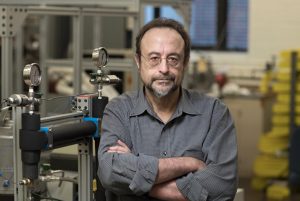Heat and Air Conditioning… On Mars?
As humanity looks beyond Earth for future settlements, the moon, and Mars have emerged as potential destinations. However, establishing livable habitats on these celestial bodies poses significant challenges, particularly in regulating temperature. To address this critical aspect, scientists must delve into the intricacies of boiling and condensation in reduced gravity, which play a crucial role in Earth’s heating, ventilation, and air conditioning (HVAC) systems.
In collaboration with NASA’s Glenn Research Center, Purdue University is undertaking an unprecedented experiment known as the Flow Boiling and Condensation Experiment (FBCE). This groundbreaking study, set to launch on August 1 as part of Northrop Grumman’s NG-19 commercial resupply mission to the International Space Station, aims to gather essential data on the behavior of boiling and condensation in weightlessness.
“We have been studying the workings of heat and cooling systems in Earth’s gravity for over a century, but understanding how they function in weightlessness has remained a long-standing mystery,” shared Issam Mudawar, the esteemed Betty Ruth and Milton B. Hollander Family Professor of Mechanical Engineering at Purdue University.

In a previous phase of FBCE, researchers explored the effects of reduced gravity on boiling, and they are now ready to investigate how condensation operates in a weightless environment. The FBCE modules will remain in orbit until 2025, providing a valuable resource for the global fluid physics community.
Beyond its implications for lunar and Martian habitats, FBCE’s findings may also advance deep-space exploration and long-distance spacecraft travel, particularly concerning advanced power and propulsion systems like nuclear thermal or electric. Boiling and condensation offer efficient heat transfer capabilities for such spacecraft.

Additionally, the data from FBCE could have practical applications for in-orbit spacecraft refueling by shedding light on the flow boiling behavior of cryogenic liquids used as fuel.
Mudawar’s extensive expertise in heat transfer, with numerous citations to his name, positions him as a notable figure in the field. His team has spent over a decade developing predictive tools based on FBCE data, encompassing equations for space system design, fundamental fluid physics insights, and computational models for fluid dynamics. These tools hold promise for predicting equipment designs suitable for lunar and Martian gravity.
FBCE promises to be a comprehensive guide on using boiling and condensation in space, with a significant body of research already published on reduced gravity and fluid flow. This pioneering endeavor marks a milestone in space exploration, offering valuable insights into the science of heating and cooling systems in reduced gravity and pushing us closer to realizing sustainable space colonization.

